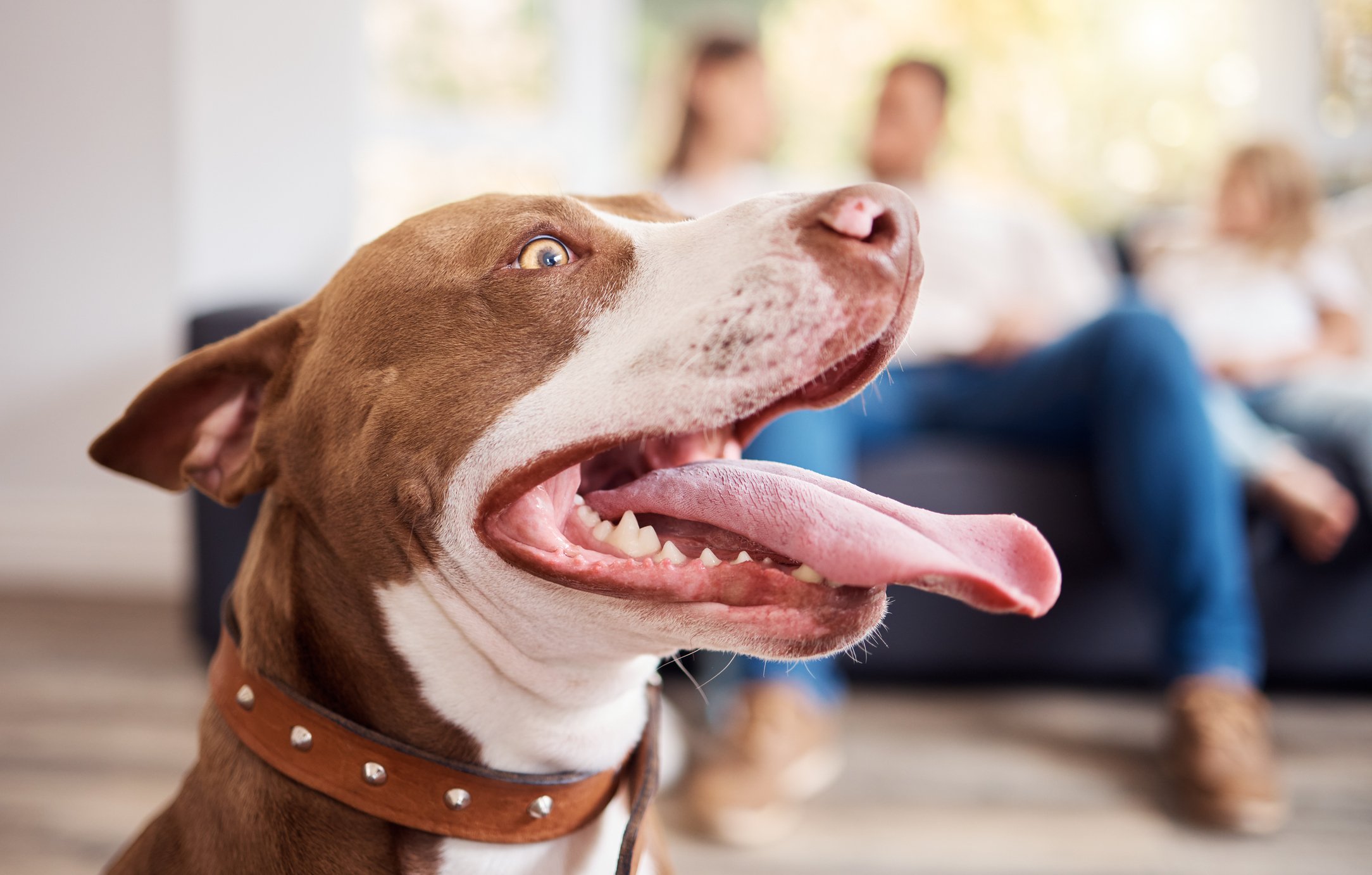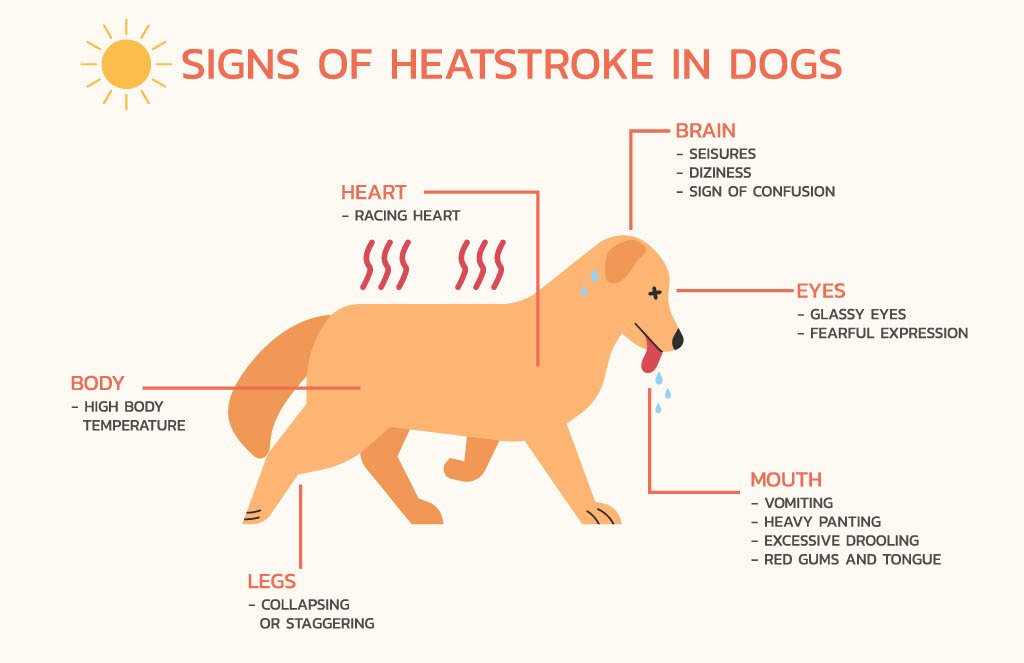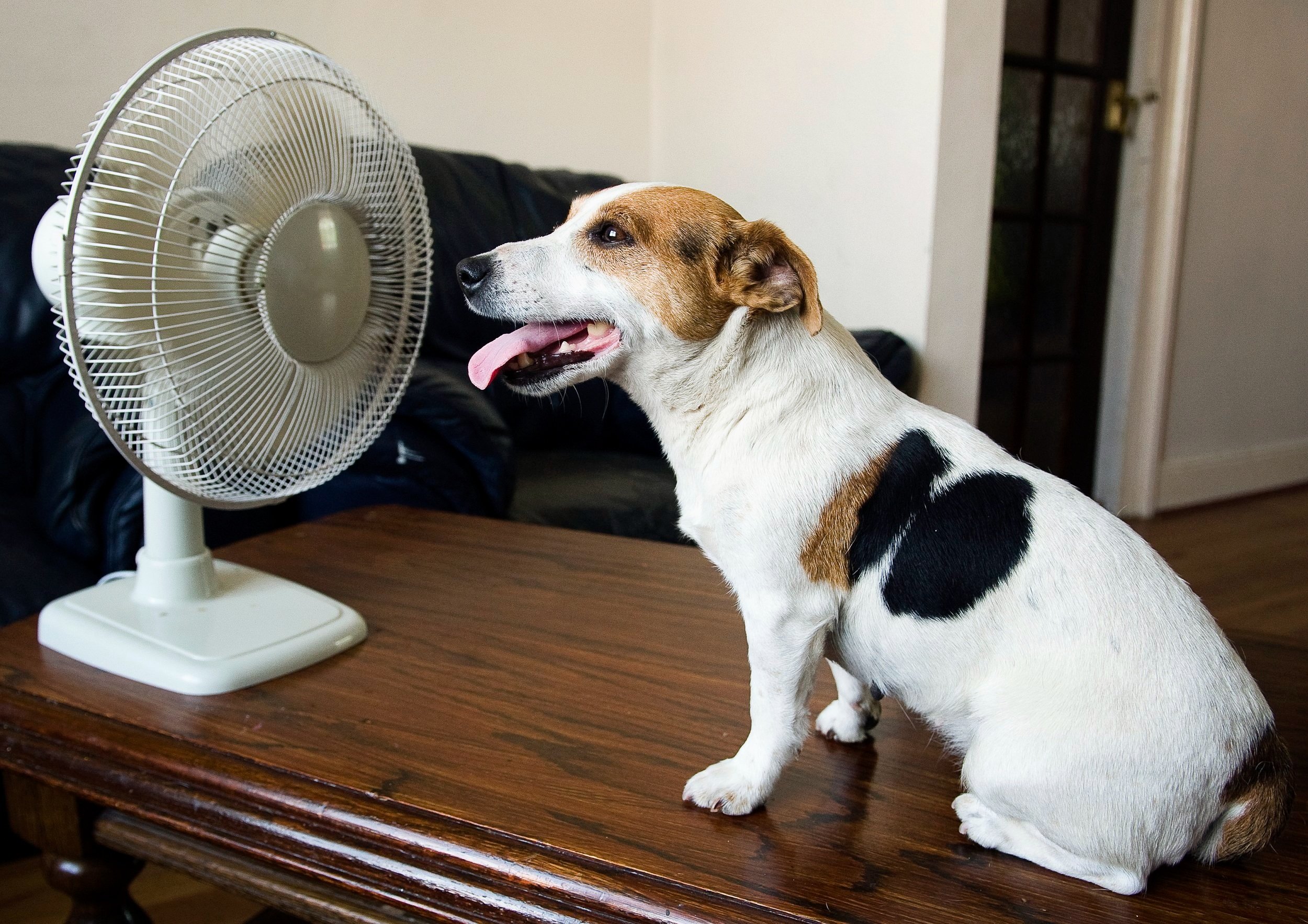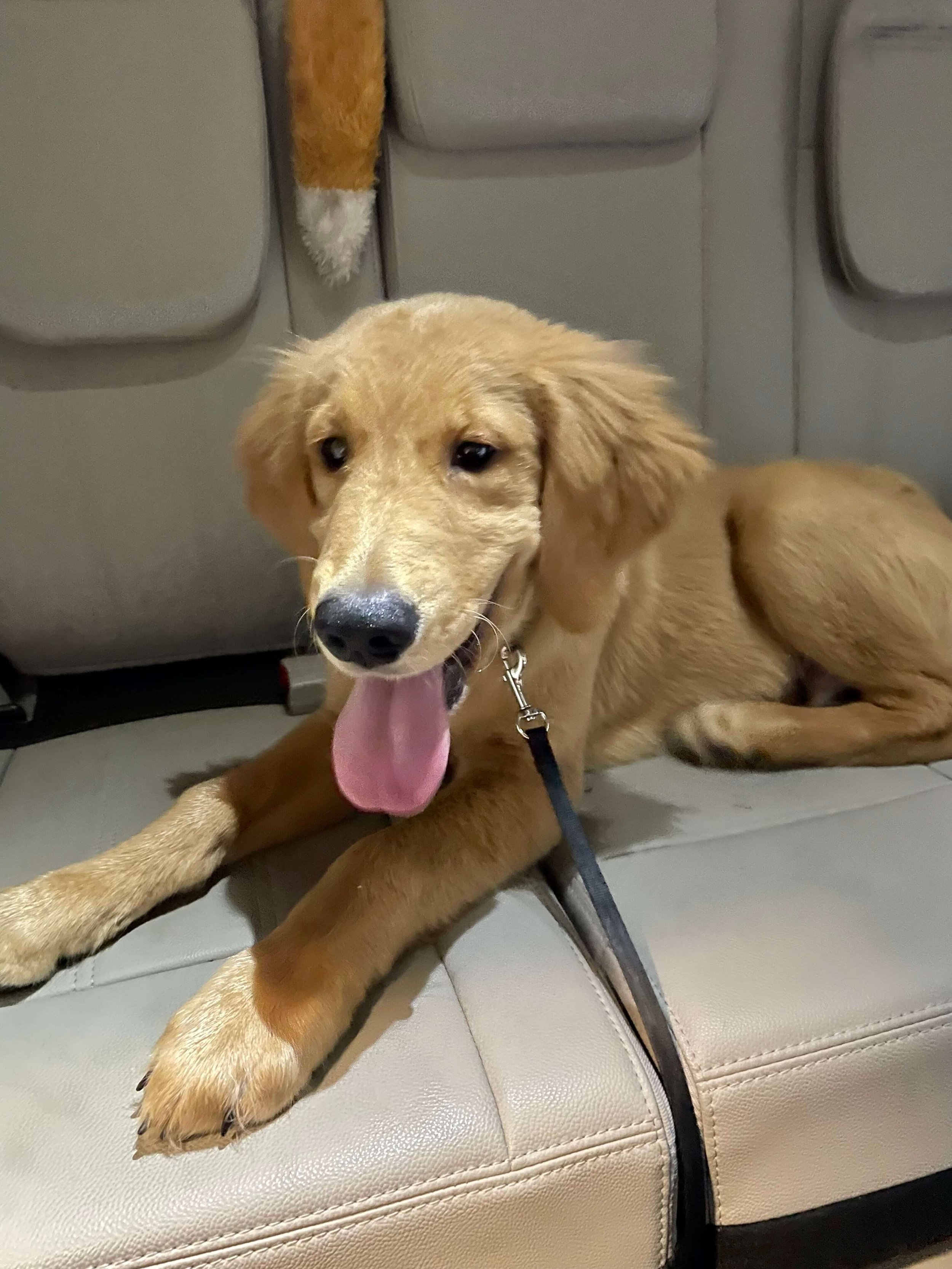How to Prevent Heat Stroke in Dogs
The risk of your dog getting dehydrated and overheating is extremely high now that summer is here.
A dog's normal body temperature runs hotter than ours, ranging from 101 to 102.5 degrees. Additionally, their coat of hair or fur is designed to help them hold onto internal body heat, so they heat up much quicker than we do on a hot day.
But unlike us, dogs cannot control their body temperature through sweating and depend on the evaporative effects of panting to cool themselves down.
That means if your dog isn’t staying hydrated or is exposed to the heat for too long, they run the risk of getting heat exhaustion and feeling ill or worse - they may get heatstroke and die.
Don’t let that happen!
Here’s what you need to know about heatstroke in dogs, what to do if your dog seems overheated, and how to avoid your dog getting too hot in the first place.
Heat Exhaustion vs. Heatstroke: What’s the Difference?
Brachycephalic breeds - dogs with flat faces like Pugs, French Bulldogs, English Bulldogs, Boxers, and Pekingese, to name a few - can’t pant as efficiently as dogs with longer snouts and are especially susceptible to becoming hyperthermic on a hot day.
Heat exhaustion, also called hyperthermia, occurs when your dog’s body temperature rises above a healthy range and they are unable to regulate their own body heat.
This condition ranges from mild heat exhaustion, which can be treated at home, to severe heatstroke, at which point your pet can run a high fever, lose consciousness, or even experience organ failure and die.
Generally speaking, if a dog's body temperature exceeds 103°F (39.4°C), it is considered abnormal or hyperthermic.
Body temperatures above 106°F (41°F) without previous signs of illness are most commonly associated with exposure to excessive external or environmental heat and are often referred to as heatstroke.
The critical temperature where multiple organ failure and impending death occur is around 107°F to 109°F (41.2°C to 42.7°C).*
(If you don’t have one, it’s a good idea to get a pet thermometer in case you ever need to take your dog’s temperature.)*
The Role of Panting in Keeping a Dog Cool
Panting is a type of rapid, shallow breathing accompanied by a protruding tongue that helps to circulate air through a dog's body and regulate its body temperature.
Since a dog doesn’t sweat like a human does, as their body temperature rises, the heat accumulating in their body can only escape through their lungs, throat, mouth and nose via the act of panting.
This is why the more overheated a dog becomes, the heavier they will pant. Typically, a dog will take around 35 breaths per minute, but this number skyrockets to more than 300 breaths per minute while panting.
Most dogs will pant a lot on a hot day, especially after some exertion like going for a walk or a run, but if the panting becomes excessive and is accompanied by labored breathing, watch out! That’s often a telltale sign that a dog is suffering from heat exhaustion and may be dangerously close to getting heatstroke.
For dog parents, it's important to take every precaution to prevent this from happening because - by the time your dog is exhibiting symptoms of heatstroke - it's often too late to save them.
The Symptoms of Heat Exhaustion
& Heat Stroke in Dogs
The most telling sign of heat stroke in dogs is excessive panting or difficulty breathing.
If your dog is panting constantly or faster than normal (hyperventilation), they could be overheated.
Other symptoms may include:
Your dog appearing lethargic, disoriented or non-responsive;*
An elevated heart rate and body temperature;*
Excessive thirst or drooling;*
Glazed or glassy eyes accompanied by a worried expression;*
Bright or dark red tongue or gums;*
Vomiting and diarrhea;*
Staggering/Seizure/Loss of consciousness/Collapse.*
*When in doubt, call your local vet. Keeping your dog safe and healthy is the most important thing. If your dog seems severely ill (vomiting, staggering, seizing, etc.) or has lost consciousness, get them to a veterinary hospital immediately.
Ways to Cool an Overheated Dog Down
If you dog is showing signs of heat exhaustion, you will want to help lower their body temperature as soon as possible.
Some of the quickest and easiest ways to cool a dog down include:
Remove them from direct sunlight and take them to the cover of shade, preferably to cooler temperatures indoors, if possible, or to an air-conditioned car.
Provide them with continuous sips of cool water to drink every couple of minutes to help them rehydrate safely. Don’t use cold water, as it may lower their body temperature too fast, which can cause more complications - so avoid putting ice in their water if they seem overheated.
Pour cool or lukewarm water over their head, stomach, armpits and feet or wipe them down with a cool, wet cloth. The evaporative cooling that results will lower a dog's body temperature and cool them off. Repeat as many times as necessary until the dog’s symptoms have subsided. (Remember to avoid using cold water, as it may lower their body temperature too fast, which can cause more complications.)
If inside, place them in front of a fan to speed up the cooling process, but only until their body temperature has returned to normal (or you might cause hypothermia!)
If you can get your dog’s body temperature down to 103 degrees, then they are moving into the clear, but we would advise that you still call your vet as soon as possible.
Even if your dog seems to be recovering, they may need to be monitored for shock, dehydration, kidney failure, and other possible complications of heat exhaustion, so your vet will be able to advise you about next steps
How to Keep a Dog Cool on a Hot Day:
Our Top 5 Tips
Portable Dog Water bottles
There are a wide variety of water bottles that make giving your dog water on the go easy. We especially like the Malsipree Water Bottle for Dogs because of its lightweight and stylish design and because leftover water in the dispenser bowl can be returned to the bottle for reuse.
1. Keep a dog hydrated and provide an escape from the heat.
On a hot day, keeping your dog well-hydrated and cool by making sure they always have access to water, shade or a well-ventilated place to rest should be your number one priority.
This may mean setting up water bowls in multiple places around your home or yard and always making sure to carry a supply of water with you on the go, so that you can ensure your dog stays hydrated and able to cool themselves down, no matter where they are.
Indoors, you may notice your dog is naturally seeking out cool, dark spaces to relax, perhaps under a couch or bed, so following suit and shifting their bed, crate or pen to a spot that’s away from direct sunlight will definitely help to keep them comfy and cool, as will fans and air conditioning.
Outdoors, a dog should always have access to shade, as well, so if none is available, it’s far better to skip yard time during the high heat of the day and keep your dog inside.
To combat boredom and make staying inside more fun, preparing enrichment toys like frozen Kongs or making your dog homemade popsicles can help to keep them happily occupied.
Some of our favorite “beat the heat” products for dogs include cooling mats for indoor comfort, portable water bottles for pets on the go, and foldable dog pools or extra large water bowls for backyard fun.
2. Never leave a dog unattended in a parked car.
Whether the windows are rolled down or not, dogs should never be left unattended in a parked car on a hot day for any reason.
The temperature inside a parked car that is getting direct sunlight can rise rapidly, turning it into an oven that will bake and kill the poor dog stuck inside within 10-20 minutes!
On hot summer days, it's way better to leave a dog at home than take them with you if you can't avoid leaving them alone in your car.
No exceptions! (Unless you are lucky enough to have a Tesla with the “dog mode” feature,)
3. Avoid vigorous exercise and walk your dog closer to dawn and dusk.
Another common cause of heat stroke in dogs is excessive or vigorous exercise during hot temperatures.
Excitable or excessively exercised dogs are sometimes at risk, even if the environmental temperature and humidity does not seem high, especially if they are not getting enough water.
If you must exercise your dog, it’s far better to do it in short bursts - giving them plenty of water and downtime breaks - than it is to push them to do anything too strenuous (like a jog or a run) on a hot day.
As a general rule, if your dog needs a lot of exercise, make sure to skip the high heat of the midday sun and opt for walks or runs closer to dawn or dusk, before the ground has had time to heat up in the morning, and to give the ground time to cool off in the evening.
And, if it’s really hot, the best option may be to skip outdoor exercise altogether and just play fetch indoors or to provide your dog with enrichment activities to keep them busy.
4. Use the “Seven Second Rule” to check if it’s too hot to take your dog for a walk.
The 7 Second Rule
The easiest way to check if it’s too hot or not to walk your dog is by testing if you can keep your hand on the pavement or ground for a full seven seconds.
A dog’s paws can get burnt quickly by hot pavement or exposed earth, even on just an average summer day.
The “Seven Second Rule” is a way of determining if the pavement or a hiking path is too hot for your dog to walk on or not.
Simply place your hand on the ground and see if you can keep it there for a full seven seconds. If not, it’s too hot to walk your dog outside and best to wait for the heat of the day to die down before stepping out.
Something to keep in mind is that black tar road surfaces get much hotter than concrete, so please be aware of that whenever you choose your walking routes.
5. Dogs instinctively avoid the heat, so observe and honor your dog’s body language.
This English Bulldog has found a shady spot to lie down to escape the heat.
The simplest way to keep tabs on how well your dog is faring in the heat is by observing their body language.
Many dogs just won’t want to walk very long or even at all on a hot day, and they should never be forced.
This is because dogs instinctively avoid being active when it's hot and will seek out the shade or other cool spaces to rest when they feel themselves heating up.
Outdoors, if you observe that your dog is actively seeking out the shade and happens to be panting or lying down a lot, it may be too hot outside for them to really enjoy themselves.
Most especially, if a dog refuses to budge from the shade, that is definitely a sign to provide them with water immediately and to remove them from the heat as soon as possible, because they are probably overheated.
Indoors, many dogs will gravitate towards lying down on the cool tile that can be found in many bathrooms and kitchens, especially after a walk or exertion of any kind. This is because the tile absorbs their body heat and helps to cool them down - so just let your dog do this, if they are so inclined.
Always be ready to observe your dog’s body language and listen to what it’s indicating to you on a hot day!
Summer can be a lot of fun for you and your dog—all it takes is a little extra attention and care! Making sure your dog stays hydrated and can escape the heat when necessary is the most important thing to remember. If you have any questions or concerns about heat exhaustion, heat stroke or caring for your dog in the summer, please contact your veterinarian.
Los Angeles dog trainer Alexandra Bassett is the founder and certified dog trainer at Dog Savvy Los Angeles, a positive dog training company specializing in game-based dog training solving problem dog behavior (like dog separation anxiety, leash reactivity, excessive barking, and aggression. She is certified as Knowledge Assessed by the Council of Professional Dog Trainers (CPDT-KA) and is available for online dog training sessions via Zoom.












